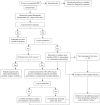Contemporary approach to the patient with malignant pleural effusion complicating lung cancer
- PMID: 31516898
- PMCID: PMC6712251
- DOI: 10.21037/atm.2019.03.61
Contemporary approach to the patient with malignant pleural effusion complicating lung cancer
Abstract
Malignant pleural effusion (MPE) occurring in the patient with lung cancer can have profound prognostic and management implications. If clinically relevant, such an effusion first needs to be confirmed as malignant and then, in the majority of lung cancer patients, it will require a pleural intervention to relieve symptoms related to fluid accumulation. The field of pleural diseases in general, and pleural malignancy in particular, has undergone dynamic changes in recent years as the evidence base informing practice has grown by leaps and bounds. Both the diagnosis and management of MPE are dynamically changing disciplines in thoracic medicine. As commonly happens, emerging data have generated just as many questions as they have answered. The aim of the present review is to summarize the current knowledge about MPE resulting from lung cancer in a manner that is accessible to clinicians across medical specialties.
Keywords: Pleural effusion; indwelling pleural catheter (IPC); lung cancer; pleurodesis; thoracoscopy.
Conflict of interest statement
Conflicts of Interest: NM Rahman served as a consultant and received research support from Rocket Medical, a manufacturer of indwelling pleural catheters. O Epelbaum has no conflicts of interest to declare.
Figures


References
-
- American Cancer Society. Cancer Facts and Figures 2018. Available online: https://www.cancer.org/content/dam/cancer-org/research/cancer-facts-and-...
Publication types
Grants and funding
LinkOut - more resources
Full Text Sources
Research Materials
